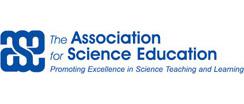- View more resources from this publisher
 Association for Science Education (ASE)
Association for Science Education (ASE)
Optical fibres in school physics 2
This Association for Science Education (ASE) publication about optical fibres was developed in association with the General Electric Company (GEC). At the time of publication GEC was the largest manufacturer of electrical and electronic products in the United Kingdom, and was one of the biggest companies in the world in this field. Its products ranged from microcircuits, and optical fibres to ground stations for satellite communications, and turbine generators. It employed more than 17,000 scientists and engineers, the majority on research and development.
The booklet contained guidance for teachers and notes for students. It included activities suitable for both students aged 14 to 16 (O-level work) and for students aged 16 to 19 (A-level work).
Teachers’ Guide
1. Industrial background
2. Educational scope
3. Notes on experiments
Students’ Notes
1. Introduction: the system
1.1 Light emitting diode (LED)
1.2 Optical fibre and its connectors
1.3 The photodiode
2. Measurements and optical fibres
2.1 Speed of light in a fibre
a) Refractive index of the core
b) Attenuation in the fibre
2.2 Numerical aperture of the fibre
3. Using fibres
3.1 Data link between computers
3.2 Communications link (telephone)
4. Additional investigations and projects
Show health and safety information
Please be aware that resources have been published on the website in the form that they were originally supplied. This means that procedures reflect general practice and standards applicable at the time resources were produced and cannot be assumed to be acceptable today. Website users are fully responsible for ensuring that any activity, including practical work, which they carry out is in accordance with current regulations related to health and safety and that an appropriate risk assessment has been carried out.




